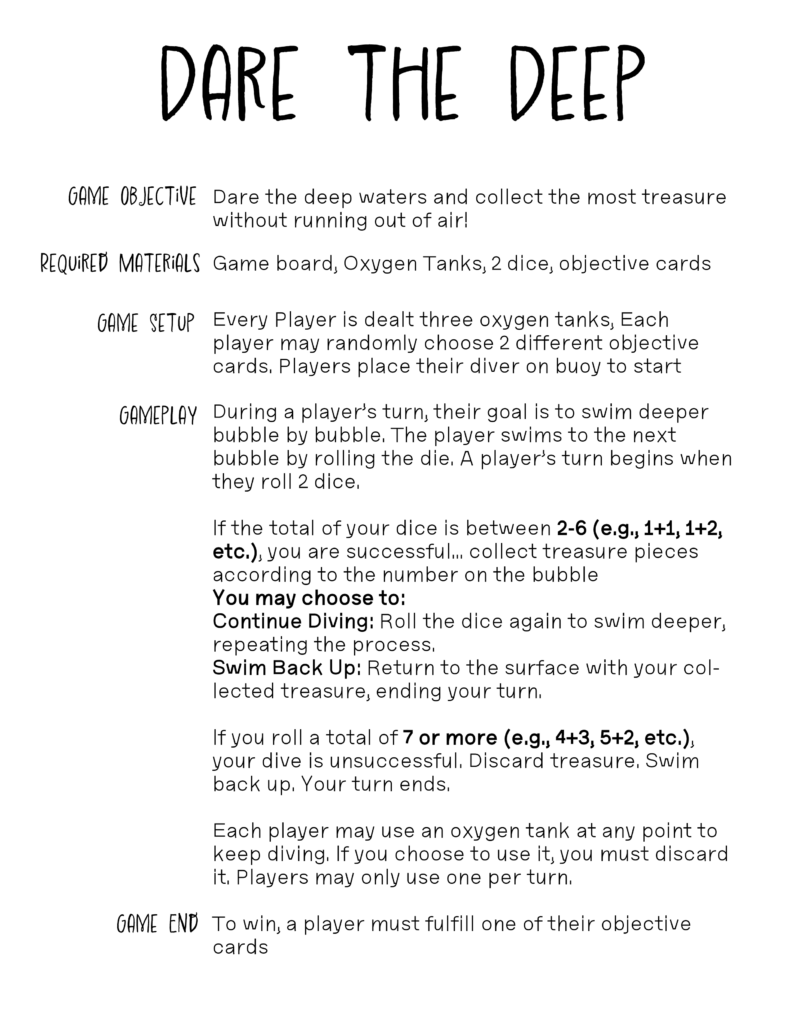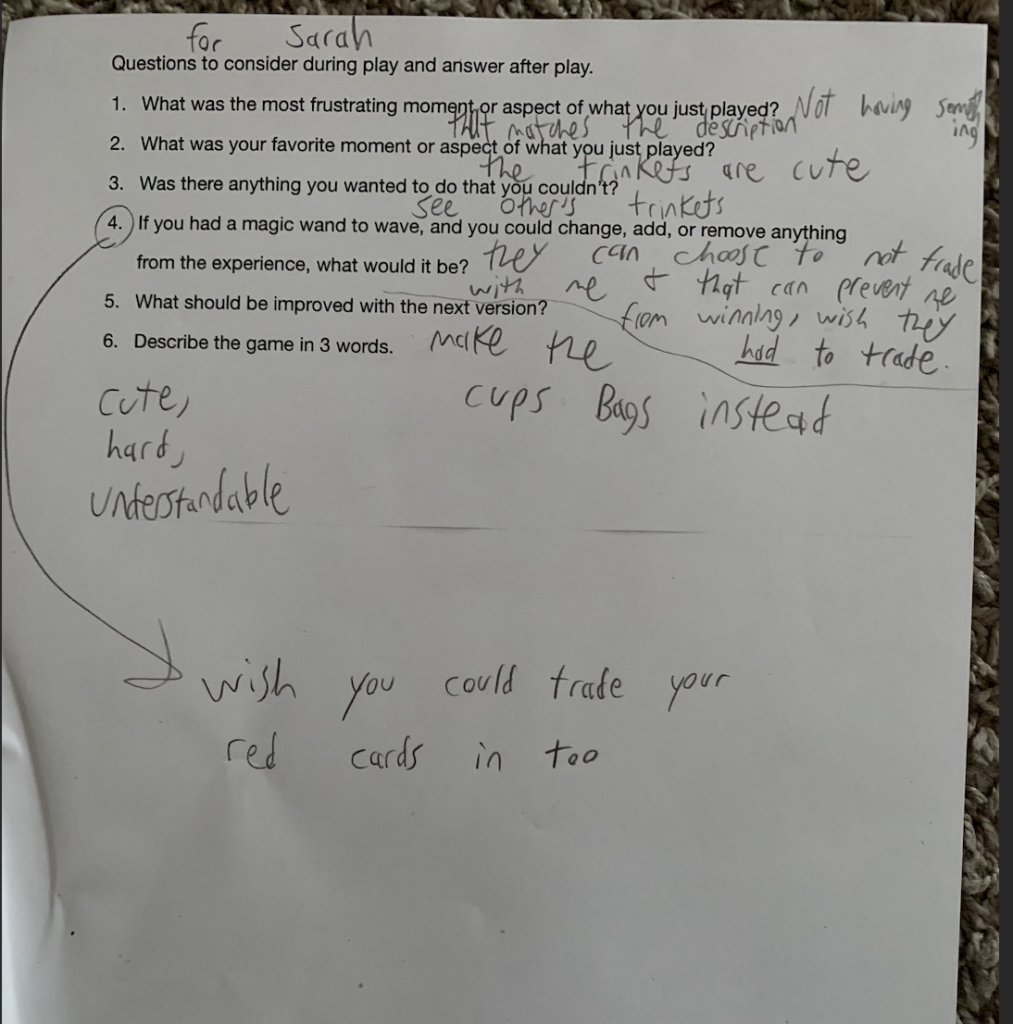- What is the difference between a game designer and a game developer?
A game designer creates the basics of how a game looks and feels in a player’s hands or on a table, but a game developer is the one who gets through the nitty gritty parts of rules, mechanics, and functionality.
- What commonly occurs during the game development process?
Deciding rules, mechanics, and the modifications needed for those parts to work as desired. There is also often a lot of trial and error and prototyping.
- What are the challenges of balancing a game?
You must be able to scale how much freedom and power players have in games, how much can they really bend the limits of the rules, and the challenge behind maintaining the balance is to maintain the integrity of the goal and process of the game getting there.
- What should every player of your game believe? Why?
For me, I often struggle with getting through certain tasks for games. I can get easily frustrated. For my playtesting, I feel that being able to hold players accountable for their choices and give them the motivation to keep going regardless of whether it looks like they will win or not is a big thing I want players to believe.
- How can you avoid stealing players’ fun?
Don’t make games so easy to win right away for one player
- What 10 maxims should you follow when writing rules?
- A clear objective · 2. Constraints · 3. Interactivity · 4. Runaway leader killer · 5. Inertia · 6. Surprise · 7. Strategy · 8. Fun. 9. Flavor 10. A Hook
- Question Set 2
- How has play testing changed your game?
It has allowed me to see new ways mechanics can be used as well as rules
- who from class would you like to playtest your next game or version 2 of your first game?
Amber, I haven’t played her first game, and she hasn’t played mine either. I have only seen the gameplay a little and I’m super interested in it
- Who is the audience for your game?
For the first game, with AI called Academic Integrity, really all ages, younger people will have an easier time though, but for the second game “A Box for my Trinkets” is young adults, as there are too many small pieces.
- Who should playtest your game outside of class?
I want to see some of the media arts faculty play Academic Integrity, I think it would be so fun and silly



